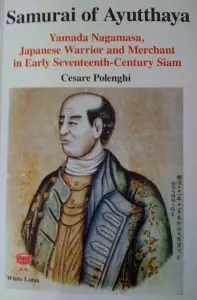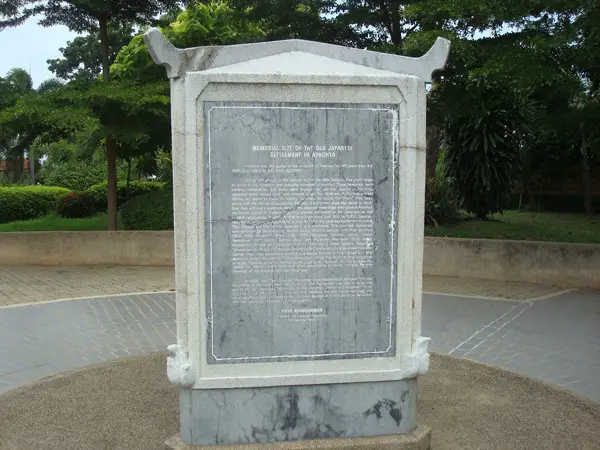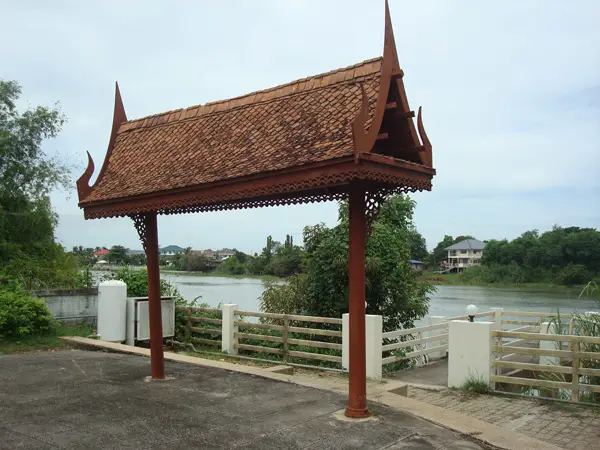 Yamada Nagamasa (or Yamada Nizaemon-no-jo Nagamasa – his full Japanese name) was born in Sumpu, Suruga province (today Shizuoka Prefecture, Chibu region, Honshu), in 1590. His father was a knife-maker, and thus it is not surprising that, from an early age, Nagamasa was fascinated with blades. Although he was not the son of a samurai, he soon developed a martial spirit. He studied at Meisatsu Rinzai Zen temple, which was affiliated to one of the three sects of Zen in Japanese Buddhism.
Yamada Nagamasa (or Yamada Nizaemon-no-jo Nagamasa – his full Japanese name) was born in Sumpu, Suruga province (today Shizuoka Prefecture, Chibu region, Honshu), in 1590. His father was a knife-maker, and thus it is not surprising that, from an early age, Nagamasa was fascinated with blades. Although he was not the son of a samurai, he soon developed a martial spirit. He studied at Meisatsu Rinzai Zen temple, which was affiliated to one of the three sects of Zen in Japanese Buddhism.
But, as Nagamasa was maturing, his dreams of becoming a well-known warrior were shattered. The Sengoku period, or the Warring States period, corresponded to an era of civil war which started in the middle of the 15th century. As the Tokugawas took control of Japan at the beginning of the 17thcentury, peace followed.
After his father died, Nagamasa did not continue his father’s profession. By that time, the artisans were at the bottom of the social ladder, so he decided against becoming a knife-maker too. His youth and strength won him a job at the castle of Numazu where, at the age of 16, he became one of Lord’s Okubo’s palanquin bearers. Upon the lord’s death, the shogunate confiscated Okubo’s wealth, as the lord had no male heirs.
Being released from his position, Nagamasa was abale to obtain a position as a dockworker in the port city of Sakai, located in what is today Osaka Prefecture. Here, by interacting with the sailors, he realized that he could lead a life of adventure and escape the hardships of post-war Japan by traveling to across the seas.
Thus, in January 1612, Nagamasa set sail southbound onboard a shogunal sponsored ship carrying a group of adventurers and a cargo of goods to be sold for profit in Siam. The vessel took ten weeks to reach its destination, but along the way, it had stopped at various ports.
Once in Siam, Nagamasa realized that the key to his success lay in quickly mastering the Siamaese language. At the same time, he made several valuable connections with men of different nationalities. Recognizing his potential, Kii Kyuemon, the leader of the Japanese community in Ayutthaya, took him as one of his protégées. He thus entered in the deerskin trade as a middleman and, soon enough, he started building up his wealth and fame.
But being a mere merchant was not enough for Nagamasa. He enrolled in a campaign aimed to curb the Burmese invasions that were in that period regularly ongoing in the northern part of the Siamese kingdom. Nagamasa did well in battle and, upon his return to the capital, King Som Tham invited him to his palace to reward him for his courage and loyalty.
A few years later, when Kii Kyuemon returned for good to Japan, Nagamasa became the next leader of the now thriving Baan Ippun, the Japanese community in Ayutthaya. Since the battle against the Burmese, Nagamasa had risen in rank at the court of the Siamese king and thus, was not only a successful merchant, but also a respected warrior in King Song Tham’s bodyguard corps. The Europeans from Siam also considered him a good servant of the Kingdom and the diplomats in Nagasaki, who were in charge of the shogun’s international relations, recognized him as the legitimate representative of Japan in Ayutthaya.
In 1628, King Song Tham gradually grew sick and ultimately passed away. On his deathbed, he entrusted his reign to a 10 years old boy who, until he reached maturity, was to be aided by two regents. One of them was Yamada Nagamasa and the other Kalahom, a nephew of royal blood. Although Kalahom was not favoured by the court, he managed to stay in power by annihilating all his opponents.
The young monarch died in 1629 and Kalahom seized this opportunity to become the new ruler of Siam. To remove the threat posed by Nagamasa, who was still faithful to the late monarch, Kalahom sent him to the southern province of Ligor to subdue a rebellion. At the same time, Nagamasa was promised the crown of Ligor (today the city of Nakhon Si Thammarat in southern Thailand), once he had restored peace. Together with his Japanese warriors, he quickly brought Ligor under the rule of Siam.
During this expedition, Kalahom managed to become as the new Siamese monarch and was now known as King Prasat Thong. As a token of appreciation, but most importantly fearing Nagamasa’s wrath, the new king sent from Ayutthaya a girl of royal blood to become his wife. But the princess was actually Prasat Thong’s agent and her mission was to kill Nagamasa. She did this by applying a poisoned plaster to Nagamasa’s leg while pretending to mend a wound he had received in battle.
Yamada Nagamasa passed away in 1630, but before he died he wrote a few lines on a tablet which he wanted to be taken to the Sengen Shrine in his hometown Sumpu. Rumors of a surviving son who tried to revenge the death of his father circulated for a while. Eventually, everyone thought that, if Nagamasa had really fathered a son with a Siamese woman, he had probably returned to Japan too.
“Samurai of Ayutthaya – A (21st-Century) Tale of Yamada Nagamasa” by Cesare Polenghi (p. 1-4)




